Lakefield College School THE OUR KIDS REVIEW
The 50-page review of Lakefield College School, published as a book (in print and online), is part of our series of in-depth accounts of Canada's leading private schools. Insights were garnered by Our Kids editor visiting the school and interviewing students, parents, faculty and administrators.
Our Kids editor speaks about Lakefield College School
Introduction
At the time of the school’s centenary in 1979, alumnus Norman Smith wrote that Lakefield College School is “full of heart, mind, fun, and a little different.” Today, all of that remains equally true, if not more so. At her first closing (graduation) ceremony, Anne-Marie Kee, the Head of School and Foundation, noted that Lakefield is at times described as the least pretentious school in Canada. There’s a good bit of truth in that, too. The grounds are friendly, with a relaxed, rural feel. While there isn’t such a thing as a typical school, Lakefield is particularly unique in the mosaic of Canadian education, continually pushing the envelope in terms of student experience, campus culture, and academic support.
Lakefield is one of the older boarding schools in Canada, though it doesn’t overtly show its age. The main building began its life as a private home, and others, including the boarding residences, have been added over the years. All combine to create a feel and an aesthetic that isn’t one most people would imagine when thinking of private boarding school.
As with any school of age, Lakefield has changed over the years—perhaps most notably in 1989, when it became coed. “The introduction of girls made a remarkable difference,” says science teacher Mike Arsenault, who has been here for upwards of 36 years. “Any school goes through peaks and valleys, and when I started it was one of the valleys. So, I’ve watched it grow and change with time.” The founding values have remained consistent over the years. With recent development, new facilities, and a new head of school bringing fresh energy to the program, Arsenault and others see this as a particularly high point in the life of the school.

Key words for Lakefield College School: Environment. Relationships. Accomplishment.
Basics
Lakefield College School (LCS) is a coed, non-denominational day and boarding school. Founded in 1879 on a 25-acre property, the school has acquired additional land over the years, growing to the current 155-acre main campus that includes a sizeable shoreline on the gloriously named Katchewanooka Lake, which also provides access to the Trent-Severn Waterway. In addition to the active lakefront, the main campus includes instructional facilities, boarding houses, extensive hiking and Nordic skiing trails, sports fields, a regulation outdoor hockey rink, high and low ropes courses and a wealth of green space. In 2007, Northcote, a secondary campus, was established, adding 160 acres of property. Northcote is primarily used, at least for the moment, for community events such as winter carnival and outdoor education.
The school sits just north of Lakefield, Ontario, a village that can admittedly feel a bit remote. The farm property that is at the northern boundary of the campus is where Susanna Moodie settled in 1832, an experience she described in her classic work Roughing It in the Bush. Per the title, it wasn’t a comfortable existence, and she only lasted six years before moving along.
Times have changed, and while there are major urban communities close by, including Peterborough, Toronto, and Ottawa, the school remains happily set at a comfortable distance from them. “You’re in the middle of nowhere in the middle of nowhere,” jokes Kee. That quip can sound backhanded—it’s one she overheard from some visiting students—but it isn’t intended that way. She likes where the campus is, and the students do, too. When you arrive here, you feel that you’ve entered a unique community and, actually, you have, both within the school boundaries and just beyond them. Among other things, the area is also home to a remarkably thriving musical culture, some of it based around Natalie MacMaster and Donnell Leahy, who live nearby and also host a music camp at LCS each summer.
While the school once offered Grades 7 and 8, today the program is just the high school years, Grades 9 through 12. A majority of the students board, and the rest clearly wish they did. Day students regularly come on campus on the weekends to study, take part in programming, or just hang out. “As a student, I was here all of the time,” says an alumnus. “I would come in on Sundays and stay until 9 or 10 pm. I would sometimes drive in just for 15 minutes of hanging with my friends at night.”
The location is, in large part, responsible for why the community has grown up in the way that it has. Where urban schools are an interface with the city around, country schools have the benefit of isolation, and Lakefield is a great example of those benefits. “The students feel a connection to [the] place here, beyond a school,” says Kee. “Lakefield is about relationships. We’re teaching students a sense of commitment to their communities … and to think about who they are and who they want to become.” That the property is so well defined, both geographically and otherwise, encourages that. In the morning, it’s a common sight to see the boarding students bustling across campus to meet the day student buses on their way to Chapel. (“There they go now,” says Kee mid thought, pointing out the floor-to-ceiling windows of her office, which offer an enviable view of the Grove. She loves to see them doing that, and it’s entirely understandable why.)
By the same token, the school reaches beyond the campus—through service learning, for one thing, but also through other participation in the communities at large. There is an annual Nordic skiing event on campus to which all area secondary schools are invited, as well as other independent schools. The students also interact meaningfully with local First Nations communities. The school doesn’t have to do those things, of course, but it’s commendable that it does, and that it makes a priority of that kind of engagement. Moreover, they see it as something that doesn’t require a second thought—the belief is that we all belong to various communities, all of which interact. The lessons of that interaction are implicit rather than explicit, but they are informed by the values at the core of the school culture.
Leadership
When we visited, Kee was just finishing her first year as Head of School, though it was also a period of reflection based on a review undertaken prior to setting the next strategic plan. “It’s been kind of a good way to spend my first year,” she said, “just talking and listening to people.” She cited three major themes that came out of the experience, ones that she intends to develop through her tenure at the school.
The first, she says, is the campus, and the importance of outdoor activity. “We’ve been obsessing over all the research that’s out there about how beneficial the outdoors is for students,” she says. Second is the strength of the community. “With this generation of millennials, part of the problem is that they’re growing up in a society where, sure, it’s true that classes are breaking down, and anyone can be anything. But what they don’t have is a deep connection to community. … that’s unique about Lakefield, in that we’re teaching that sense of responsibility to a community—here, but also locally, globally, and ideally one that’s tied to an area of passion and commitment.” The third, she feels, is to create opportunities for authentic learning. “What we can do really well here is help kids think about who they are and who they can become.”
While new to the school, Kee is not at all new to independent education. She served as Executive Director of Canadian Accredited Independent Schools (CAIS) for more than a decade. She’s been a teacher, the dean of studies, and the chair of the integrated technology implementation program at Lower Canada College in Montreal, Quebec. And those are just the highlights. In all, it’s safe to say that there’s no one in the country that has as much first-hand experience and insight into independent education. And her commitment to LCS is a deep one—even before she joined the school herself, she had enrolled her children here.
Bringing Kee on board was seen, by parents and staff, as a continuation of what Guy McLean, the previous Head of School, had done prior—leading with a bold outlook and a desire to bring all constituents to the table. Kee does it in her own way, and through the lens of her own personality, and she’s undoubtedly off to a great start, as reported by students, parents, and faculty alike. The things that get mentioned most are those relating to her close interactions with the school community. Since arriving, she has included students within the development of the upcoming strategic plan. She has an open-door policy at her house, which is on campus. She’s also the first female head to move into the head of school’s house (Sarah McMahon, who served as Head between 2010 and 2012, did not live on campus).
“She has a charisma with students,” says Heather Avery, former Director of Guidance and Learning. “That’s going to be very, very good for the school. It makes everybody’s work easier when the students really like the Head, and they feel she gets them.”
“And she listens,” adds Arsenault. That sounds like a simple thing, perhaps, but it isn’t. And if there’s one skill that defines an effective leader, that’s it. When asked what she aspired to be in the eyes of students, Kee answered: “Someone who asks good questions.” Love that.
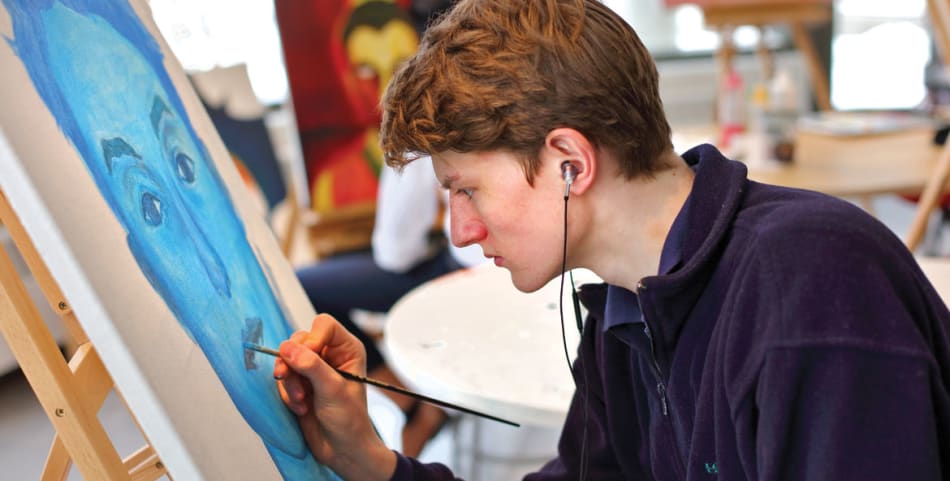
Background
LCS was founded in 1879 by Sparham Sheldrake, then a recent graduate of Cambridge University. Frances, Sheldrake’s daughter, wrote that “Dad arrived in New York with a horse and a valet, along with other young men who wanted to learn farming. I do not know why they decided on Lakefield, but many of the old houses are copies of homes in England.” Such are the kinds of things upon which fate is formed.
The main building was modelled on Sheldrake’s family home in Ipswich, England, where he was born. (Today, it houses the reception and main offices.) “Dad was never cut out to be a farmer, and I think my grandmother persuaded him to start the school.” So he did. There were 15 students in the first year. Frances’s letter is as quirky and fun as her father seems in her representation of him: “He was always the life of the party,” and if her writing is any indication, Frances was, too.
The campus included a large private house, some cow barns, and a woodpile, all at the property where the school stands today. It was named the Grove Preparatory School for Boys, but was universally referred to as The Grove.
When the Sheldrakes moved to Toronto, Dr. A.W. Mackenzie became headmaster in 1895, inaugurating the first significant phase in the school’s life. A student from the time later recalled that Mackenzie was “a wonderful headmaster who not only instructed the boys, but by his example was a great character builder.”
The growth was checked from time to time. The war years, as at all schools, had a profound effect, one that lasted at Lakefield perhaps a bit longer than at others. The 1960s were a period of reflection and growth under the direction of headmaster Jack Matthews. The name of the school was changed to Lakefield College School in 1966, and with the renaming came a restatement of the core mission of the school in order to reflect the changes in the national culture.
Arsenault noted that, when he arrived almost four decades ago, the school didn’t have much in the way of financial endowments. Boarding schools in Canada through the 1980s were all experiencing a dip in interest. It’s been decades since then, of course, including changes in leadership that made a priority of growing the facilities and the tools necessary to attract the students who need to be here (including financial aid programs), as well as building diversity across the school.
Facilities
“[The students will] all find their little space,” says Kee, be it the Grove, the trails, the Chapel, or someplace else entirely. “They’ll talk about how they walk by the lake going to classes.” Most classes take place in the school block, though the grounds are always a pull. It’s not uncommon for students to go paddle boarding during a free period. “Even in the winter, they’ll go outside to get to the dining hall. That’s pretty special.”
It is. The feel on campus is akin to summer camp. “When they go to camp it’s almost like a second family,” says Tim Rollwagen, Director of Global Learning. “And the atmosphere at Lakefield, and the freedom that it allows, including the variety of opportunities that it has … it’s much like that. Maybe it’s even just going for a walk in the woods at the end of the day … it allows you to have this feeling of a second home.”
In the spring, the school taps 190 maple trees throughout the campus, including those around the visitors’ parking area. When you arrive, you see them lining the drive. There are apiaries, solar panels, a huge composter. Those are just some of the more obvious indicators of a commitment to the environment, and a participation with the environment, that is rightly a point of pride among the faculty and administration. Because of them, students look forward to the changing of the seasons in ways that students elsewhere perhaps don’t. When an alumnus donated the funds to build an artificially cooled skating rink, he did so on the provision that it not be enclosed. He enjoyed playing hockey outside, and it was an experience that he wished to impart to future generations. So, the new rink has a world-class surface, regulation boards, and no roof. It underscores the concept of skating as a winter activity.
In 2008, LCS christened Hadden Hall, a student recreation centre that includes a gym, a climbing wall, exercise facilities, and both common and instructional areas. It was the first building on campus to be gold-certified by Leadership in Energy and Environmental Design (LEED) (a prominent North American green building certification program, now with chapters around the world), and it was joined in 2009 by Cooper House and in 2015 by Uplands, both boarding residences.
What is The Grove?
The official name of the school was originally The Grove Preparatory School for Boys, but it was often referred to in shorthand as The Grove. But ask anyone on campus what The Grove is, and their answer is most likely to begin with an “Um …” or a “Well …”, followed by a pause while they collect their thoughts. It’s more of a concept than it is a place.
Take the Commons, for example. The name presumably began as a reference to a specific place—actually, the space between the two houses of parliament in London, England. Today, the concept of the town commons is much richer in ways that can be difficult to define. Such is The Grove. It can refer to the stand of trees outside the headmaster’s house or the entire campus. More importantly, it also refers to the community, traditions, and values of the school. Where other schools might talk about their vibe or their culture, Lakefield has The Grove.
“For me, The Grove is really about relationships,” says an alumnus. “It’s feeling the life of Lakefield, and knowing what it’s all about. It’s kind of like the feeling that you get when you arrive on campus … the feeling I get in the dining hall, with people saying hi. It’s the feeling of teachers asking, ‘Hey, how is your day going?’—not just ‘Where’s your assignment?’ That’s the real Grove.”
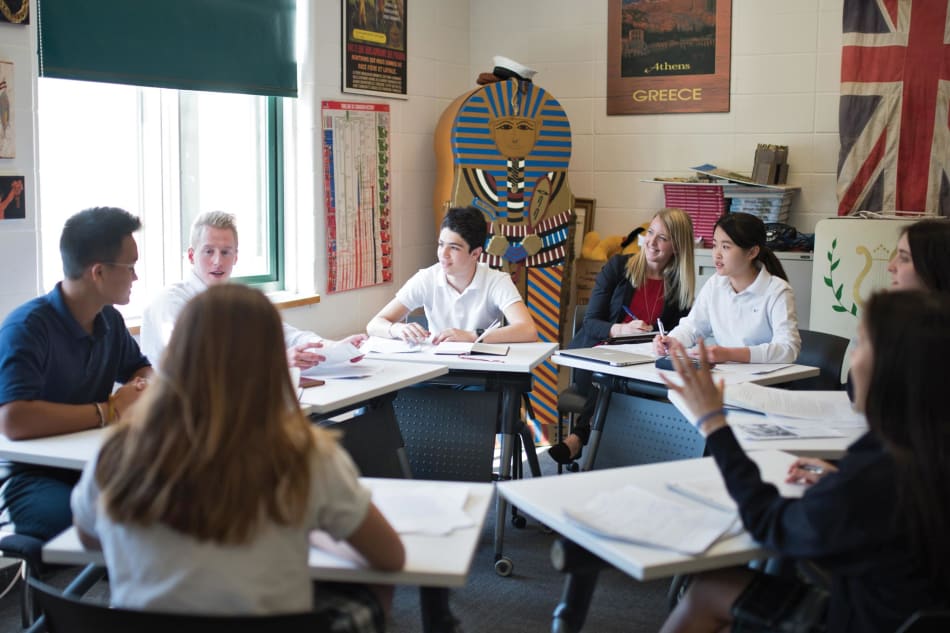
Academics
There is a focus on delivering an experiential program, with an emphasis on self-discovery in addition to the basics. This approach allows the students the latitude to engage with the content while exploring their personal relationship to it, to learn who they are, and to find how they will be able to best contribute. As such, instruction is student-centred, with opportunities for them to personalize their learning, ask questions, engage with peers, and to otherwise be active agents of their learning. Although LCS offers a liberal arts program, Joe Bettencourt, Assistant Head: Academics, feels that the school doesn’t present a single instructional style, per the various buzzwords that are in the air these days: experiential, discussion-based, inquiry-based, progressive, traditional. “We have not said that we are one of those particular pedagogies,” says Bettencourt, “but we offer students a variety of those so that students can find one that clicks for them.” In practice, different programs naturally tend to different approaches, and instructors rightly follow their instincts. Outdoor education includes some classroom instruction, but it is, understandably, predominantly experiential. Likewise, language instruction is very personalized, allowing students a lot of voice, choice, and customization of their learning tracks. In science, things tend toward inquiry-based instruction, with a growing attention to cross-curricular learning. English has moved toward a deliberate development of Harkness-style discussion-based learning.
That variety, says Bettencourt, grants students authentic opportunities to learn and to grow their interests or access new ones. “This year, there have been teachers who have taken students outside to, say, apply a mathematical idea in a real-world context—whether it’s trigonometry, investigating inaccessible heights, or in a modelling exercise, where they’re using a particular function to represent something that’s on site, such as the architecture.”
The faculty feel supported and encouraged to be creative in their delivery. One teacher told us about an escape room exercise that was used to get at some key problem-solving concepts. The students went in at the end of the school year and were challenged to use all of their math skills to solve a series of problems that, if successful, allowed them out of the escape room. “One thing that stands out for me,” says Bettencourt, “is how far teachers go in creating unique learning opportunities for students that go above and beyond what a textbook offers.” Indeed, there’s ample evidence of that.
Sarah Thompson teaches French, and in one instance, she set up the classroom as a restaurant. “They arrived at the door and they were completely in their roles, and we made it as immersive and authentic as possible. And, as a result, a Grade 9 class spoke French for an hour. They were on blind dates at a restaurant. And, creating those types of scenarios, we’re thinking about making it seem as real as we can,” while also extending a facility with the core concepts. She admits that “sometimes you try an experiment and it can fail, but it’s also a supportive place. So, our classrooms look messy at times, but it’s just significant of the fact that a lot of unique things are happening here.”
Professional development is ongoing, including online and in-person courses from Harvard’s graduate education program, among other courses and resources. The teaching culture is one of reflective practice, looking into each other’s classrooms and meeting both formally and informally to share ideas and trade best practices. There are school-wide initiatives that are offered to all the faculty, and instructors are tasked to apply for development programs. The Associate Faculty role invites recent graduates from teacher’s college to apply to both teach and assist with residential duties in the houses. The mentorships that develop further underscore that culture of reflective practice.
Advanced Placement (AP) courses are offered, and they are popular, to be sure, something that is reflective of the proclivities of this particular student population. They don’t shy from academic engagement, though they also don’t choose AP courses simply for the sake of it. “The feeling is that the AP offerings allow the students to choose,” says Bettencourt. “They offer a challenge. There aren’t many students who line up for the AP courses” because of any specific reputation, “but rather choose them because they are curious, or because of specific areas of interest.”
Authentic learning
Authentic learning is a term that is often raised at the school, and it’s a core concept of the academic program. Mike Arsenault explains that authentic learning “is learning that has a component of real life to it. There should be some sort of life-worthy merit to whatever it is we’re doing [and we’re] always trying to connect it to the kids, what the kids’ experience is, and always trying to ensure that they have a real understanding of the through-line—how all of the bits and pieces will eventually make up a whole.” It can emerge in numerous ways, and across a range of settings. “One of the labs that I run is to extract cheek cells, and what I have them do is take a look at whether a certain locus on chromosome 11 … is heterozygous or homozygous, and they can tie that right back to their parents, and they can understand a lot of the biology that we’re talking about through that particular process.” Authentic learning is best, he feels, when it includes a personal element, as in the case of those cheek cells. “Part of the lab procedure is to amplify the DNA, so we make billions of copies—we have the machinery and the capacity to do that—and we visualize that using electrophoresis and then try to figure out, from the banding, what that might mean. We would then do analysis on world populations, and where they fit in among those populations. It’s a big-picture analysis in a lot of ways”—one that is about biological concepts, as well as human populations, granting a unique view of a student’s relationship to both.
The feeling is that authentic learning happens when students are building skills and knowledge that has a greater purpose beyond getting a grade and completing a diploma. Says Bettencourt, “It’s about learning how I can continue to pursue things in life with these resources that I’m being exposed to here in high school. To me, that’s being authentic and teaching through big ideas. If you’re really focusing on every kid picking up every single nut and bolt, then their job is going to be to go through high school picking up nuts and bolts. But if they’re thinking about the kinds of questions that they’ll continue to ask later on in life, then they will understand how these nuts and bolts have a purpose beyond Grade 10 math.”
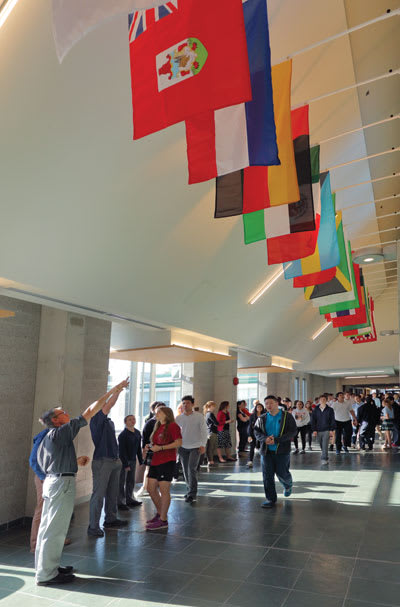
Academic environment
Programming is seven days a week, academic program is six days a week, including classes on Saturday mornings. That can sound like a drudgery, but students appreciate it, actually, in that the life of the campus is always active, and the scheduling allows for a more consistent mix of academics, arts, and athletics through the week.
Thompson is an instructor as well as an alumna. “When I reflect back on what happened here, it was more of a feeling than specifically what we were taught,” she says. “And it was that feeling that inspired me to want to go back and give that back to my students. And I try to keep that in mind. … I think that’s what Lakefield does really well. Our kids come away confident, inspired, and curious, and I think that sets us apart.” She recalls that she had so much fun in her math classes at Lakefield that, even though she enrolled in an arts program at university, she took a math class in her first year. “And I realised that, no, I don’t really love math, I just had really good teachers.”
Reflecting on both of those aspects of her experience of the school, Thompson says that “I think teachers at LCS, we have more of a relationship with students, where it does feel friendlier and you feel like you can go to your teachers with any problem—and there’s just this sort of connection that’s here that I haven’t seen or felt at other places.”
“I believe there’s a lot fewer people who are clocking their day here,” says Bettencourt. “And I think there’s a different kind of experience for students when they’re surrounded by adults who see their role as a vocation and not as a job.”
Student population
There are 365 students on campus each year, and the overriding belief is that the school is at its right size: not too big, not too small, but just right. The staff know all the students, and vice versa, something that furthers the feel and culture of the environment.
“Almost 20 years ago,” says Heather Avery, Former Director of Guidance and Learning, “the view looking forward from the back of the Chapel was a lot different.” The school is considerably more diverse now, something that she understandably sees as one of its strengths. It didn’t just happen; it was the product of changes in the culture as well as a pointed interest in managing enrollment. Approximately one-third of students arrive from more than 40 different countries with a good spread among them, which augments the student experience. That diversity is thanks to a global recruitment program, undertaken out of a belief in the benefits of an international mix, and the perspective it can bring to instruction and to the student experience as a whole.
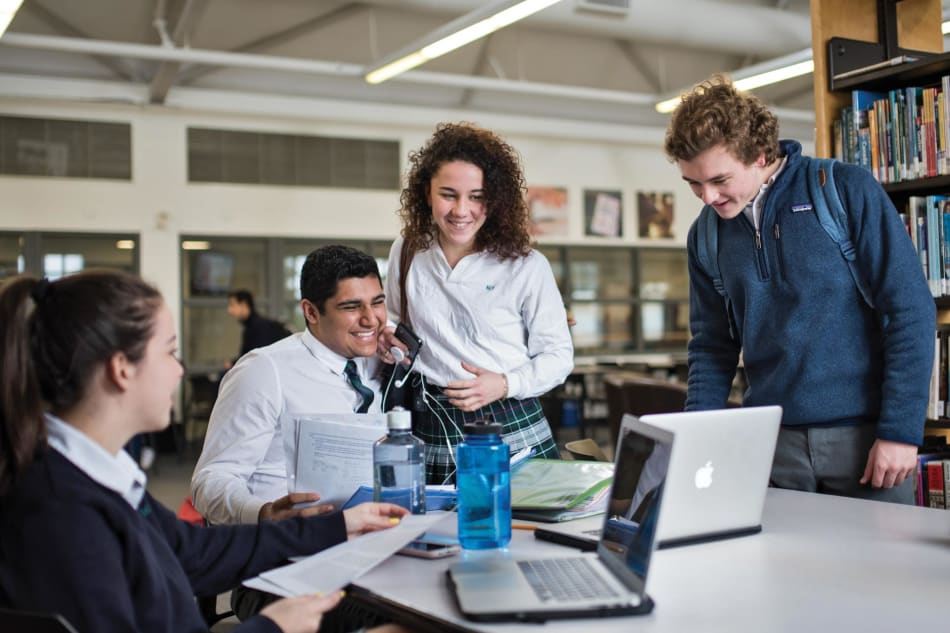
Athletics
“My son loves the whole ‘work hard, play hard’ aspect of the school,” notes one parent. Certainly, physical activity is central to the student experience. There’s an expectation that all participate in a sport every term, with an informal stipulation that those sports are outside. They can still choose the climbing wall, or basketball in the winter, but the campus includes Nordic ski trails, outdoor skating, hiking, snowshoeing, and the like.
There is a real focus on recreational sports, in addition to the competitive elements of the athletic program. On Ted Pope Day, the entire school goes skiing for a day. “It used to be a surprise,” says Kee. “And when kids arrived in chapel, they’d have it sprung on them that ‘it’s Ted Pope Day!’, and classes were off, and skiing was on.” It’s not a surprise anymore—the feeling is that you can’t have those kinds of surprises, given the need for risk management—but the event still occurs each year.
In a warmer weather tradition, students grease up a watermelon that gets tossed in the lake. Teams compete to retrieve it. “They go hard here,” says Kee. “And even if you’re not the one out on the water jousting, or grabbing the watermelon, it’s pretty fun to watch.” Indeed, it really is. There are students and staff lined up along the dock and the shoreline, eating popsicles and drinking it all in.
Similarly, there’s an annual obstacle course, the Regatta Day Adventure Challenge, which includes teams made up of students, parents, and faculty. Events within it range from running to paddling to, in the last edition, throwing axes. At the end of the race, a member of the junior team commented that “This was only our first attempt and we will be back again! We have three more years to hone our skills and challenge the course again!” No doubt he’ll do exactly that.
Some of those things can seem frivolous, perhaps—but that’s deceptive. While staff and faculty likely don’t dwell on it all that much, the feeling is that the fun, silly activities help inform the culture of activity, reaffirming that, at the end of the day, it’s supposed to be a fun, consistent aspect of life.
Meanwhile, the competitive programs are as varied as they are serious and developed. LCS is one of the most competitive and successful Division II schools in the Conference of Independent Schools Athletics Association (CISAA), with a vast majority of the teams qualifying for CISAA play-offs, year after year. Among the school’s most successful competitive teams, there are the usual suspects—soccer, basketball, volleyball, hockey—but ultimate frisbee is a big one here, too, with some students advancing to positions on national teams. The same is true in snowboarding, just as rowers have gone on to compete nationally and internationally. Training is on the lake in the spring and fall; during the winter, the rowers train indoors at nearby Trent University. There are also a number of LCS alumni who have participated in the sailing program and gone on to competitive sailing in the Olympics.
In all, it’s a good blend; for all the success of the competitive teams, the school does a good job of keeping a nice mix between competition, recreation, and physical health.
Outdoor education and service learning
LCS has long been a leader in outdoor education, due in no small part to the physical assets of the campus. “A lot of other schools have what they call outdoor education,” says Peter Andras, Program Area Leader for Outdoor Education and OE teacher for the past 16 years. “[At other schools,] students are bused up to a camp, they spend two or three days, and it’s only done in one instance, or a couple instances, throughout the year. Whereas, at Lakefield, we can integrate it into everything that we do. We have all the canoes, all the climbing equipment. We do it all right here, right on site.”
The reason they do it—and ultimately why outdoor education has become such a core element of the culture at LCS—is because of the skills, behaviours, and values that it imparts. “We’re in the business of educating the whole person,” says Andras. “It’s not just sitting in a classroom and memorizing material. … We value relationships, and we value all of those cross-curricular ties. And everything can be integrated into outdoor ed.”
All of that is apparent in how the programs are run, and how the students respond within them. “I remember seeing how supportive they were with each other,” says a student reflecting on her first visit to the campus. She toured an outdoor education class and was particularly impressed in the case of one student who was struggling with a fear of heights on the climbing wall. “Everyone was helping her to get to the top.” What impressed her most was what she felt it said about the students, as well as what it said about the values of the school. “I thought, ‘this is the place where I could be the best version of myself.’”
That said, it goes beyond the campus proper, and across the curriculum. Among other things, trips are taken into nature for sketching and painting the landscape, just as Tom Thomson did to create some of his most celebrated work. Like Thomson, students, at times, travel in by canoe and stay within the landscape they are describing in their artwork.
“In physics,” says Andras, “they’re learning about estimating distances, or working through architectural problems, or trail maintenance. …. There are so many different things that you can tie together through outdoor education if you have the space to do it, and can get kids out of the classroom to do it.” Geography classes make use of the various ecosystems and landforms within the property. “It’s common to see us going outside in the trigonometry unit,” says instructor Tim Rollwagen, “with the students all focused on the ratios in triangles, finding the height of buildings and the heights of trees.”
Rollwagen is the Director of Global Learning, something which extends the outdoor focus of the school effectively around the world. “All of our international trips do have an extensive outdoor program,” he says. A recent trip to Peru included a wellness and spirituality piece, and research into Incan culture. The annual trip to Ecuador included a first-hand experience of the biological diversity within the Galapagos. “Our whole school is rooted in outdoor education,” says a student. “Our entire school program is based around the connection with the land.”
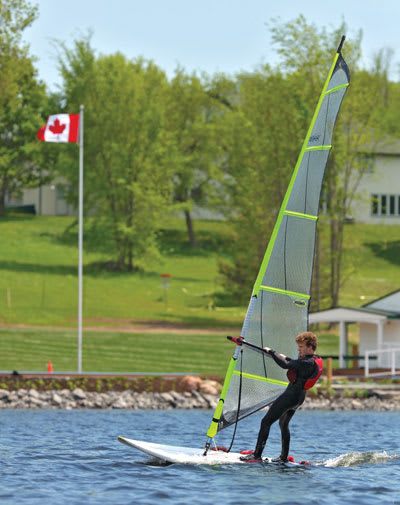
Pastoral care
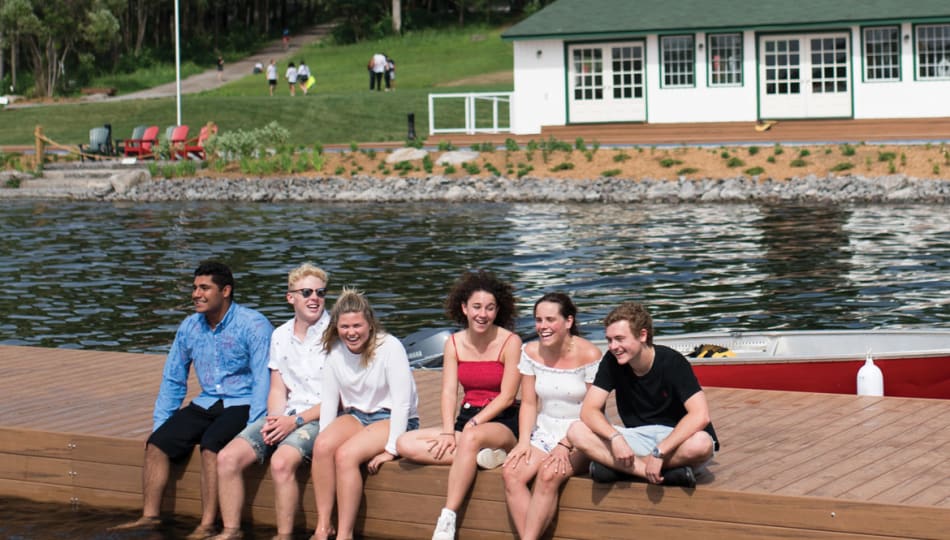
In addition to the dedicated support team of professionals in the Health Centre, including a mental health nurse, pastoral care worker, and on-call psychiatrist, pastoral care and wellness is strongly imparted through THRIVE, a school-wide program that was created to instill habits and practices that will lead to life-long well-being. The first phase of the program began with a partnership with Greg Wells in 2015. Wells is an associate professor at the University of Toronto, where he studies elite sports performance, and a senior scientist in translational medicine at The Hospital for Sick Children. He’s also the author of Superbodies: Peak Performance Secrets from the World’s Best Athletes.
THRIVE began with Wells, in partnership with LCS faculty and staff, rolling out a program aimed at educating students on the benefits of sleeping, moving, eating, and thinking better. The second phase has focused on positive psychology, says Avery. It included in-house training of three faculty members to be positive psychology trainers, who began the work of sharing that with both staff and students. In 2018, Kirsten Johnston, Associate Director of Guidance and Learning, was appointed as a Values Advocate for Education of the Whole Person, and her work has included developing a strength-based focus for LCS work with students.
Avery feels that the decline in wellness can be tracked to a specific year. “A lot of people who do research in this area would say that the decline in mental health with students started with the iPhone in 2008. … I did hear some good news recently that it’s actually plateaued … but we were seeing that and reacting to that.”
Even beyond smartphones, Avery says that student wellness “is always something that Lakefield has prided itself for. I think of Lakefield as a really positive campus. When you walk through the halls, the kids are happy and smiling. It actually has a sense of well-being among the students and staff, and it always has. And we thought, we can own this. We can have a program that is deliberate in its intent to support students.”
THRIVE is the result. There have been a range of changes and adaptations linked to the program, from physical modifications—for example, installing blackout blinds in residences so that kids can sleep better, or opening up the campus to walking trails—to student surveys around what they’d like to see, or improvements they feel could better support their learning and overall wellness.
“It’s infiltrated our courses, our advising program, our leadership program,” says Avery. “For example, in Grade 10 science, if you’re doing your culminating assignment, you’re doing a project called ‘Thriving with Biology.’ The students pick an organ system, and the students look at how to make that organ system happier and healthier through well-being practices.” There are other tangible adaptations as well, such as students going for a walk before taking a test. “You’ll see some teachers doing breathing, progressive relaxation, and transition exercises with their kids as they come into class.”
The Grade 9 core curriculum now includes a plan where students are tasked with advancing positive psychology principles; they choose specific principles, and their readings in their English courses are related to those. “It’s a big, long project,” says Avery. “We started in Grade 9 and the intent is to continue infusing it into the later grades through the next three years, to gradually infuse the entire curriculum.”
The impetus for the THRIVE program grew out of a the school’s previous strategic development plan, as well as a growing sense that something really tangible needed to be done to address student wellness, particularly around mental health. That’s something that you’ll see at schools across the country. That said, what you typically see is promotion of guidance and counselling. The fact that Lakefield has chosen to go beyond that is telling. The hope is that students not only feel supported in the day-to-day, and are aware that help is close by should they need it, but that they also encounter wellness issues as part of the curricular and co-curricular programs. As such, the THRIVE initiative has been built to touch all of the students, whether they are consciously aware of it or not. Wells comes in to speak with students from time to time, and, to be sure, the choice to partner with him is particularly apt given the overall culture of the school, one based around the benefits of physical activity, the benefits of nature and education outdoors.
At the end of the day, the THRIVE program is tangible and wide-reaching, and the school has rightly thrown a lot of weight and resources behind it. It’s not just about intervention or counselling, but also about raising awareness around diet, sleep, habits, and wellness practices, including academic engagement with all of those concepts. You’d be hard-pressed to find a wellness program that approaches the quality and heft of this one. No doubt it will become a leader in the field, one that other schools will be looking to emulate.
Every student has an advisor that they meet once a week, both individually and within a group. With the adoption of THRIVE, the advising process is being reconciled to a specific advising curriculum based on the practices of positive psychology. “A lot of advising,” says Avery, “is chatting with kids and sorting out their various problems—being a supportive adult and helping them self-advocate, take responsibility, and training them toward autonomy and, for some, self-regulation. But there is an underlying curriculum as well that’s available to advisors that they can tap into around well-being, study skills, and those sorts of things.” It’s all written in-house by Avery and Johnston.
Academic counselling
In addition to the more than 40 academic advisors at LCS, there are twelve LCS staff on the Guidance and Learning team including a Program Area Leader, Director of University Guidance, three guidance and learning counsellors and a Learning Strategist The guidance department starts with students in Grades 9 and 10, working individually around clarifying goals and making course selections. Avery gives the example of Jack, the Co-Head Student, who on graduation in 2018 was going on to Stanford University. “We started working with him and his family for that trajectory as early as the spring of Grade 10, because he was competing with American students, who themselves would have been working on that trajectory since that time or earlier.”
We met Jack, and certainly he’s as talented as he is goal directed. He was specific in his goals early on, though Avery notes that not every student is. The process through academic guidance rightly depends on the student, meeting them where they are and working with them through an analysis of their talents, desires, and goals.
In Grade 12, all students are required to take weekly classes with a guidance counsellor in addition to individual appointments. “Some students we’ll meet with 20 times over the course of six months,” says Avery. That would be the high end, but in all, it’s case-by-case. The guidance offices are just off the library, so they are in a high-traffic area, both accessible and visible to students daily. Says Avery, “We’re available, let’s put it that way.” And certainly, they are.
Parents and alumni
“What I find is that I’m also advising parents,” says Arsenault while discussing the advising he does with students. “I would often translate for them, ‘here’s what your kid is saying, and here’s what that means in kid language. So, maybe we need to think about that.’” The interface, as reported both by the school and by parents, is extremely porous, with lots of formal and informal communication between the faculty and home. “Often there are flashpoints between a kid and a parent, where the parent has certain expectations, and those expectations become a real sore point to the kid. So, what it really comes down to is: how do we manage all of that stuff?”
Parents clearly appreciate not only the frequency of communication with the school, but also the character of that communication. One parent told us that the faculty is in contact regularly with the usual reports, as well as lectures that they’ve heard, or articles and programs they’ve come across. “You really feel that connection,” she says, “that you’re not just kept aware of what’s going on, but [you] also [feel like] part of what’s going on. … as a day parent, I have an opportunity to visit the school, but the communication between the school and the parents I think is superb.” She noted a dinner that new families are invited to, allowing a chance to start getting to know the head of school as well as some of the other parents. Events through the year, as well as awareness of an open invitation to participate in the life of the school, continue the development of the parent community.
Getting in
“The admissions process was easy and didn’t feel stressful at all,” says a current parent, “though I would suggest doing it during the school’s registration time. We did it afterwards and it was more rushed.” While the school can make some accommodations, it is indeed best to apply during the fall, the main registration time, for entry to the school the following spring.
The application process includes all the bells and whistles you’d expect to find when enrolling at a school at this level, stature, and academic profile: tour, interview, paperwork, testing, and transcripts. But the school sees it as a relationship, with the application being the first step in establishing it. “We were led through the process so we didn’t have to figure out what exactly was called for next,” that parent notes. Interviews can be done over Skype, or other means, to aid students applying from a distance. “My son did a Skype interview with the head of school so that he didn’t have to drive back up to the school.” Afterward, she received a letter of acceptance and admission. At that point, she felt that all was well in hand, including the beginnings of academic counselling. “On one of the trips to the school, we had visited the guidance office and picked courses, so that had already been processed.” For families bracing themselves for a cold application process, full of demands and anxiety, rest assured that Lakefield isn’t that kind of school. Many students—and even parents—told us that they felt like part of the fold even before the first classes began.
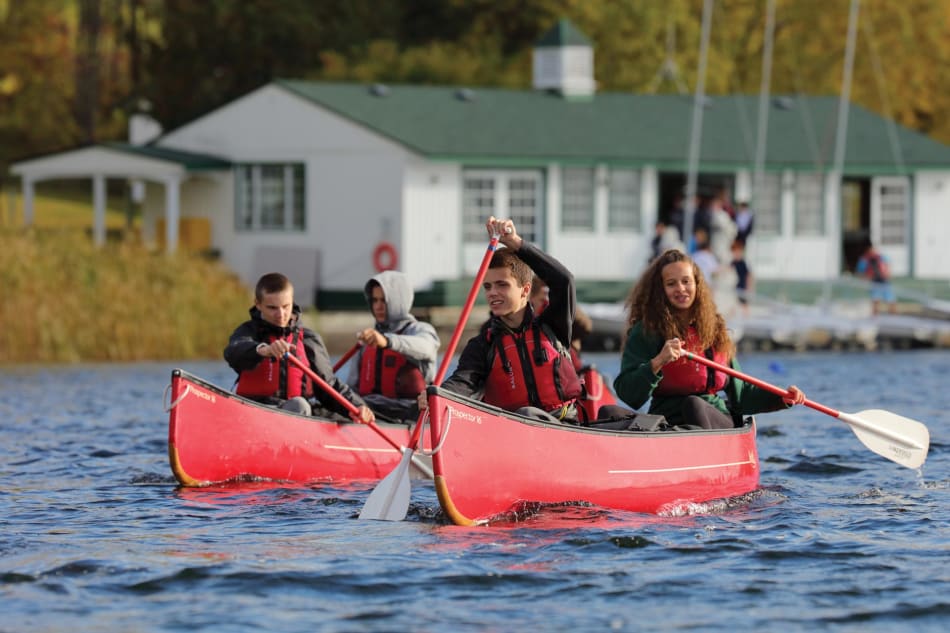
Money matters
Parents confirm that the fees are well communicated up front, and that there aren’t any surprises along the way. One parent told us that “the information they have on their website is so comprehensive that when I had a chance to go through everything there, it left me with very few questions.” She felt that trips and fees associated with some extra-curricular activities were typical, expected, and otherwise quite light. “They also have a store in the school that students can use, and I find their costs there are actually really low compared to what you’d find in a retail setting.” The school also has the Replay Program, a used uniform exchange that parents take good advantage of.
Lakefield has a sizable financial aid program and distributes close to $2 million in aid each year. All accepted students may apply for a bursary, and qualifying families typically receive between $4,000 and $15,000. Distribution is needs-based, and the process is blind, handled by a third party. Applications for aid are sent directly to Apple Financial Services. Academic standing and contribution to the life of the school are also factors for consideration.
The takeaway
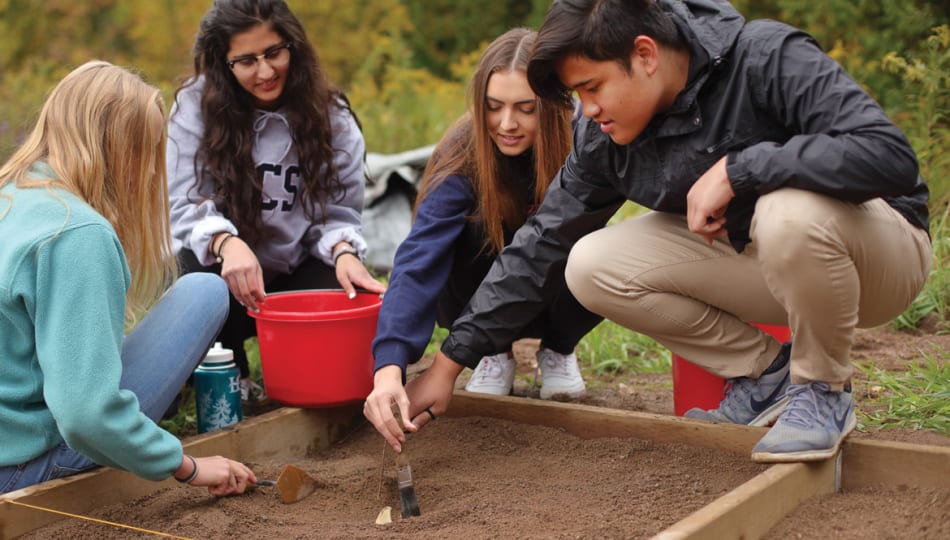
The first thing that people typically know about Lakefield is that HRH The Duke of York and the King of Spain both studied here. And, truth be known, they did. That said, the reality of the school isn’t perhaps of the sort that we might feel would attract a royal gaze. Lakefield is nestled in a rural setting, and while academics are strong, there is also a balanced focus on co-curriculars, physical activity and outdoor education as a vehicle for the development of interpersonal and leadership skills. As a result, students are more likely to be found on the ropes course or at the hockey rink than in quiet contemplation at tea time. Academics are rigorous, though lifestyle is, too—often creating a heightened level of engagement. Alumni, including HRH The Duke of York, retain a very personal and visible connection to the ongoing life of the school.
In all of that, and much more, there’s a lot to love about Lakefield—evidenced by the fact that Kee enrolled her children here and then signed on as the Head of School. Given her professional experience, there’s likely no one in the country with a greater understanding of private and independent school offerings. And she chose Lakefield.
No school is for everyone, but it’s difficult to imagine the kinds of students that would have a hard time finding a place here. It’s challenging, welcoming, and supportive in equal measure. We spoke with a student who came from Bancroft (about an hour away) and another who came from Bequia (an island in the Grenadines). The latter had never seen snow before; the former has probably seen enough for a lifetime. And both are happy, contented, and thriving. In that, and so many ways, the diversity of the student body is a model for other schools, as is the robust program of financial aid created in the service of building that diversity. Life on campus is active, to be sure, but not onerous—all the activity seems to come with equal helpings of welcome challenge, spirit, and fun.
“In life, you have to be resilient, and to be able to rely on each other,” says Andras. Those are the kinds of lessons that the environment at LCS has been developed to provide, both in the classroom and beyond. But it’s also about place. “To be rooted,” wrote Simone Weil, “is perhaps the most important and the least recognized need of the human soul.” Certainly, the middle of nowhere has as much claim as anywhere else to being the centre of the universe. For many of the students and faculty we spoke with, that’s the position that Lakefield occupies in their lives.




